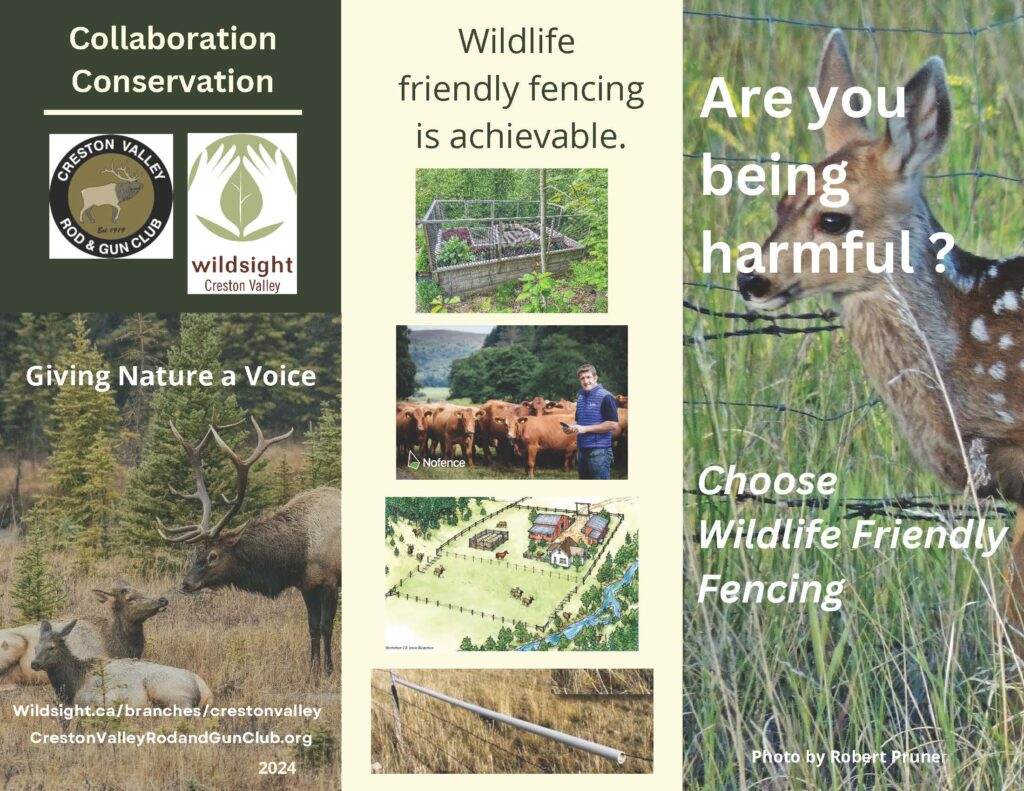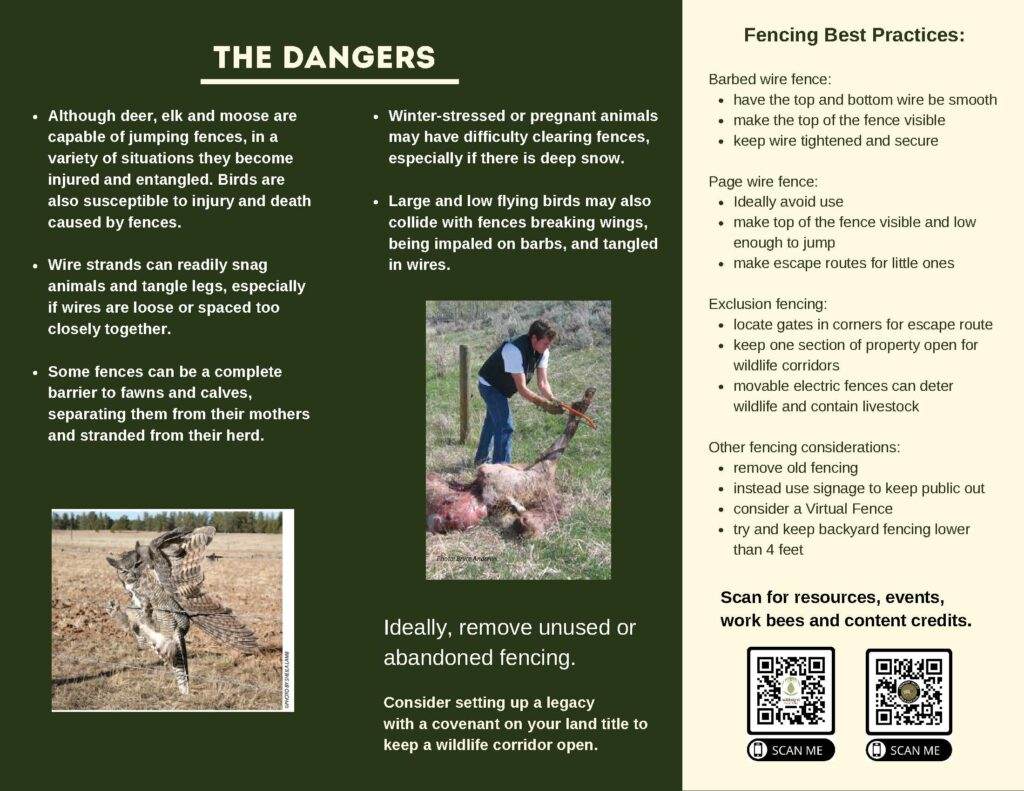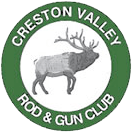

A fence that is friendlier to wildlife:
- Allows animals to jump over and crawl under easily without injury or the fence ensures wildlife can’t be trapped within the confines or blocked from water and habitat.
- It is highly visible for both ungulates and birds. It is maintained to avoid entangling and skewering wildlife.
These are links to helpful instructions and tips for maintaining and erecting safe fences:
A fence that is friendlier to wildlife:
- Allows animals to jump over and crawl under easily without injury or the fence ensures wildlife can’t be trapped within the confines or blocked from water and habitat.
- It is highly visible for both ungulates and birds. It is maintained to avoid entangling and skewering wildlife.
The Dangers
- Although deer, elk, and moose are capable of jumping fences, in a variety of situations they become injured and entangled.
- Wire strands can readily snag animals and tangle legs, especially if wires are loose or spaced too closely together.
- Some fences can be a complete barrier to fawns and calves, separating them from their mothers and stranded from their herd.
- Winter-stressed or pregnant animals may have difficulty clearing fences, especially if there is deep snow.
- Birds are also susceptible to injury and death caused by fences. Large and low flying birds may collide with fences breaking wings, impaled on barbs, and tangled in wires.
Problems exist with fences that:
- Are too high to safely jump
- Are too low to crawl under
- Have loose or broken wires
- Have wires spaced too closely together
- Can impale or snag a leaping animal
- Are difficult for animals to see
- Create a complete barrier to ecological connectivity (Learn more about connectivity with this Parks Canada video)
Tailor your fence to specific needs, and allow wildlife access to water, important habitat, and travel corridors.
Consider before you construct a fence:
- Purpose of a fence
- Topography
- Presence of wildlife
- Daily and seasonal movement of wildlife
- Presence of water, food, and cover
- Presence of young animals
- Problem fencing spots
Some Remedies:
- Just fence what is needed, and leave space for wildlife movement
- Locate gates in corners of exclusion fences for escape route
- Yard fences are not more than 4ft high.
- Make the top of a fence highly visible. Add reflectors and flag for birds
- Electric fences can deter predators
- Decommission unused fences
- Use signage instead of a fence

